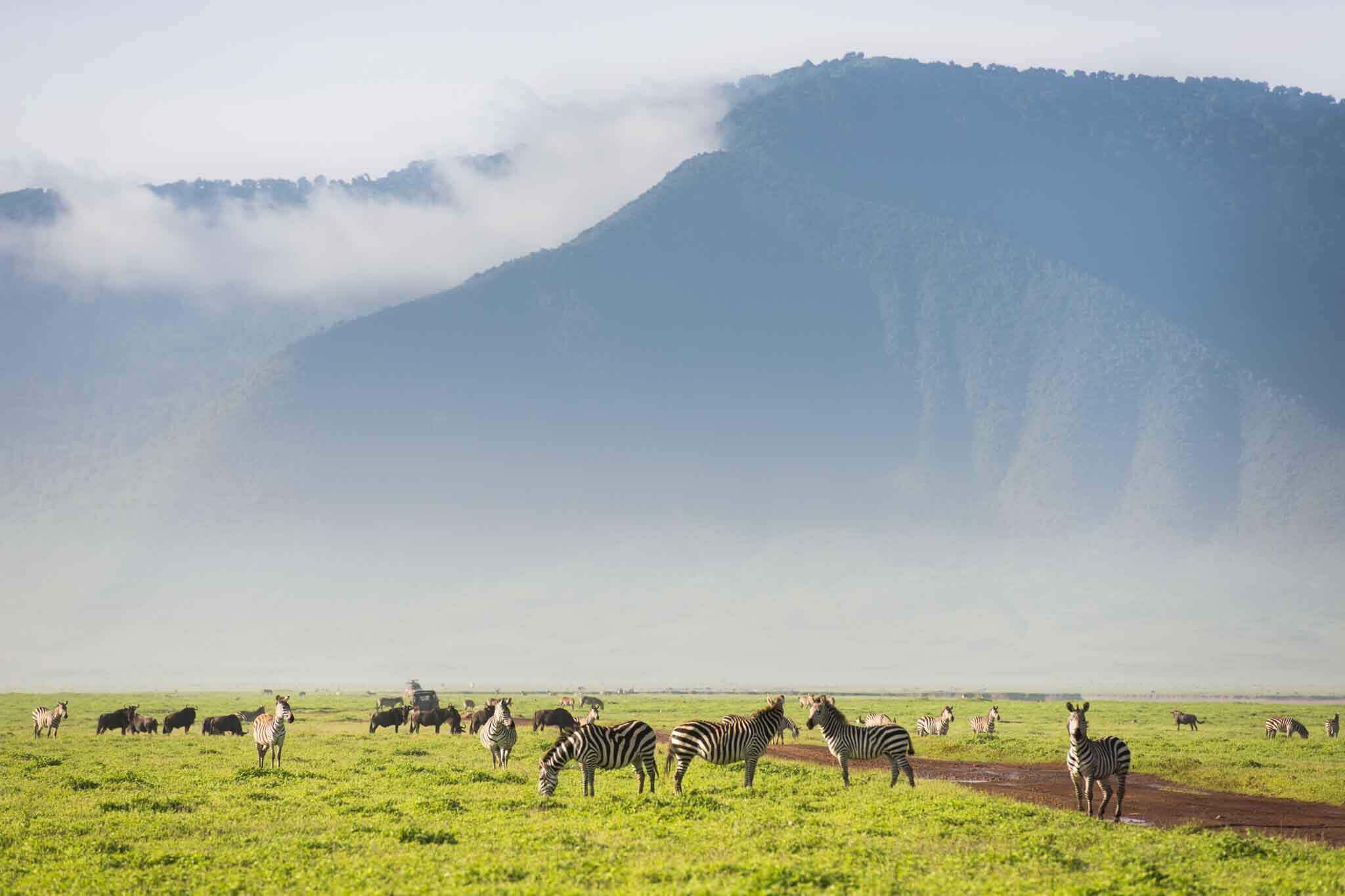Ngorongoro Crater

The Ngorongoro Crater is a geological marvel and a natural wonder situated in northern Tanzania. It is part of the larger Ngorongoro Conservation Area, a UNESCO World Heritage Site, and is often referred to as the "Eighth Wonder of the World." Formed by a collapsed volcano millions of years ago, the crater boasts a unique ecosystem, remarkable landscapes, and one of the highest concentrations of wildlife in Africa. Its breathtaking beauty and abundant wildlife make it a must-visit destination for any safari enthusiast.
THINGS TO KNOW ABOUT NGORONGORO CRATER
The Caldera
The Ngorongoro Crater is the world's largest intact caldera, measuring approximately 19 kilometers in diameter and covering an area of about 260 square kilometers. The caldera floor descends to a depth of over 600 meters, creating an enclosed habitat that sustains a wide range of flora and fauna.
Abundance of Wildlife
The crater is home to an incredible diversity of wildlife, making it a paradise for animal sightings. The enclosed nature of the crater provides a natural sanctuary for the resident wildlife, including the Big Five - lions, elephants, buffaloes, leopards, and rhinoceros. Additionally, you can spot cheetahs, hyenas, wildebeests, zebras, hippos, and an array of bird species.
Conservation and Coexistence
The Ngorongoro Conservation Area is unique in that it allows the Maasai people to continue their traditional pastoralist lifestyle alongside wildlife conservation efforts. The coexistence of wildlife and human communities within the area adds cultural significance and a sense of harmony between nature and local communities.
Spectacular Scenery
The landscapes within the Ngorongoro Crater are nothing short of breathtaking. The crater's floor is adorned with lush grasslands, swamps, and acacia forests, while the steep crater walls offer stunning vistas and scenic viewpoints.
Year-Round Destination
Ngorongoro Crater offers fantastic wildlife viewing opportunities throughout the year. The dry season (June to October) is particularly popular, as animals gather around water sources, making it easier to spot them. However, even during the wet season (November to May), the lush greenery and lower visitor numbers make for a unique experience.
Limited Accommodation Inside the Crater
Unlike some other national parks, there is only a limited number of lodges and camps allowed to operate within the Ngorongoro Crater. Due to this restriction, accommodation options inside the crater can be more exclusive and need to be booked well in advance.
Conservation Challenges
Despite its protected status, Ngorongoro faces challenges such as human-wildlife conflicts, poaching, and managing the delicate balance between tourism and conservation. Efforts are continuously being made to address these issues and ensure the sustainability of the ecosystem.
Ngorongoro Crater stands as a testament to the incredible wonders of nature, offering a unique and awe-inspiring safari experience that combines stunning scenery, abundant wildlife, and cultural heritage. Visiting this remarkable destination provides an opportunity to witness the intricate relationships between humans and wildlife, leaving visitors with memories to cherish for a lifetime.
Ready to start your safari adventure in Tanzania? Don't miss your check out this safari planner
